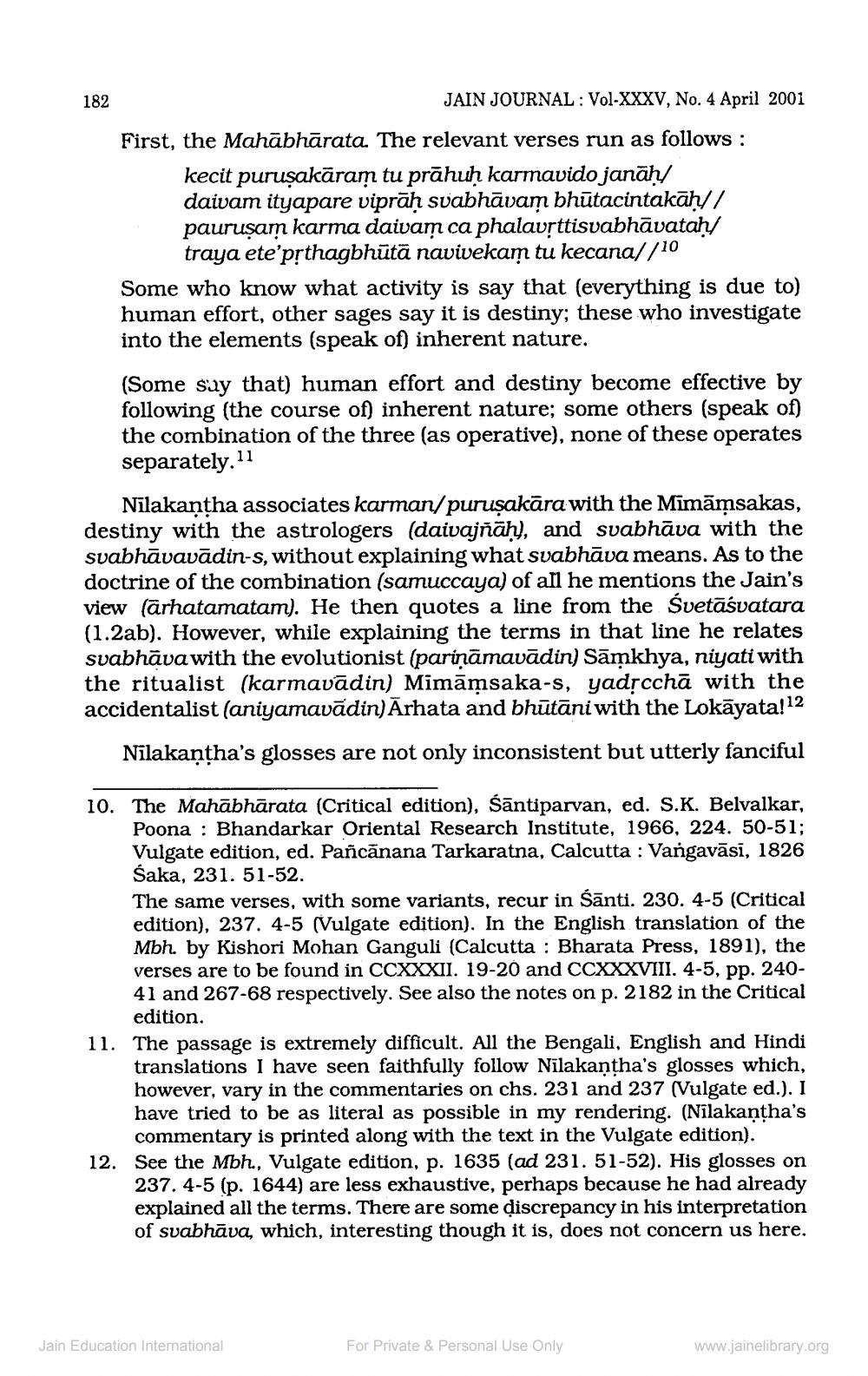________________
182
JAIN JOURNAL : Vol-XXXV, No. 4 April 2001 First, the Mahābhārata. The relevant verses run as follows :
kecit puruşakāram tu prāhuḥ karmavido janāḥ/ daivam ituapare viprāh suabhāvam bhūtacintakāh// pauruşam karma daivam ca phalavrttisvabhāvatah/
traya ete'pệthagbhūtā navivekam tu kecana//10 Some who know what activity is say that (everything is due to) human effort, other sages say it is destiny; these who investigate into the elements (speak of) inherent nature. (Some say that) human effort and destiny become effective by following (the course of) inherent nature; some others (speak of) the combination of the three (as operative), none of these operates separately. 11
Nilakantha associates karman/purusakāra with the Mimāmsakas, destiny with the astrologers (daivajñāh, and svabhāva with the svabhāvavādin-s, without explaining what svabhāva means. As to the doctrine of the combination (samuccaya) of all he mentions the Jain's view (arhatamatam). He then quotes a line from the Svetāśvatara (1.2ab). However, while explaining the terms in that line he relates svabhava with the evolutionist (parināmavādin) Sāmkhya, niyati with the ritualist (karmavādin) Mimāmsaka-s, yadrcchā with the accidentalist (aniyamavādin)Ārhata and bhūtāni with the Lokāyata! 12
Nīlakantha's glosses are not only inconsistent but utterly fanciful
10. The Mahābhārata (Critical edition), śāntiparvan, ed. S.K. Belvalkar,
Poona : Bhandarkar Oriental Research Institute, 1966, 224. 50-51; Vulgate edition, ed. Pañcānana Tarkaratna, Calcutta : Vangavāsi, 1826 Saka, 231. 51-52. The same verses, with some variants, recur in Sānti. 230. 4-5 (Critical edition), 237. 4-5 (Vulgate edition). In the English translation of the Mbh. by Kishori Mohan Ganguli (Calcutta : Bharata Press, 1891), the verses are to be found in CCXXXII. 19-20 and CCXXXVIII. 4-5, pp. 24041 and 267-68 respectively. See also the notes on p. 2182 in the Critical
edition. 11. The passage is extremely difficult. All the Bengali, English and Hindi
translations I have seen faithfully follow Nilakantha's glosses which, however, vary in the commentaries on chs. 231 and 237 (Vulgate ed.). I have tried to be as literal as possible in my rendering. (Nilakantha's
commentary is printed along with the text in the Vulgate edition). 12. See the Mbh., Vulgate edition, p. 1635 (ad 231. 51-52). His glosses on
237. 4-5 (p. 1644) are less exhaustive, perhaps because he had already explained all the terms. There are some discrepancy in his interpretation of svabhāva, which, interesting though it is, does not concern us here.
Jain Education International
For Private & Personal Use Only
www.jainelibrary.org




